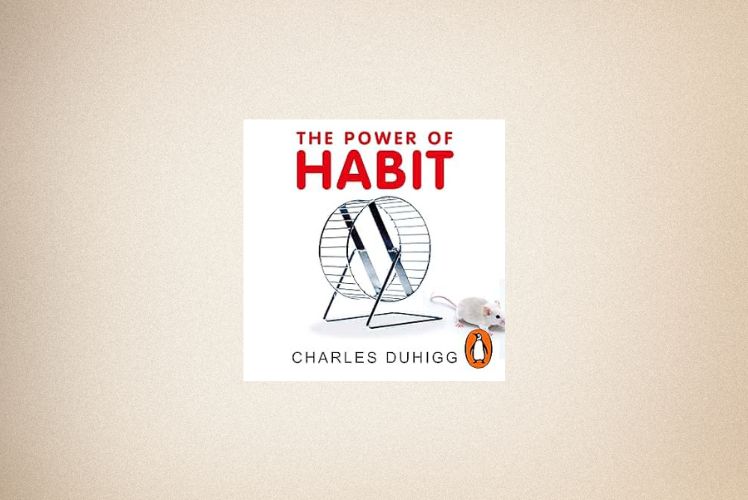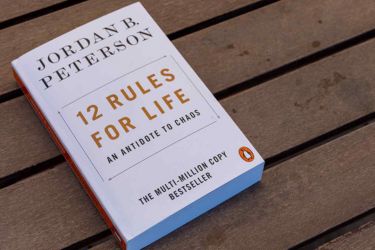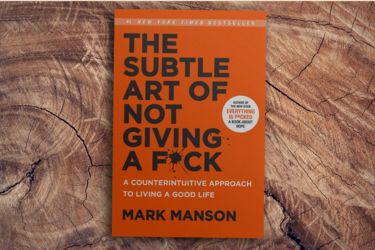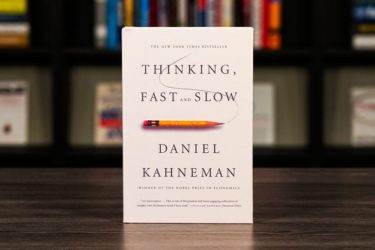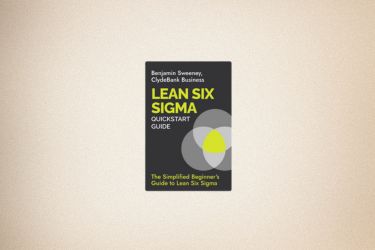Understanding why we do what we do has puzzled humans for centuries, but Charles Duhigg's The Power of Habit offers a clear roadmap to decoding our daily behaviours. Published in 2012, this groundbreaking book combines scientific research with compelling real-world stories to explain how habits form and, more importantly, how we can change them.
Duhigg reveals that by understanding the three-part "habit loop" of cue, routine, and reward, we can engineer lasting changes in our personal and professional lives. The New York Times investigative reporter doesn't just explain the science behind habit formation—he provides practical strategies that work for individuals, organisations, and entire societies.
Whether you're trying to break a bad habit, build better routines, or transform your workplace culture, this book offers evidence-based insights that can create real change. From the transformation of major corporations to the success of social movements, Duhigg demonstrates that habits are the invisible forces shaping our world.
Key Takeaways
- Habits follow a predictable three-step loop of cue, routine, and reward that can be understood and modified
- Keystone habits create positive ripple effects that automatically improve other areas of life and work
- Organisations and social movements succeed by identifying and changing the collective habits that drive behaviour
Overview of The Power of Habit
Charles Duhigg's The Power of Habit stands as one of the most influential self-help books on behaviour change, combining scientific research with practical strategies for transforming both individual and organisational habits. This comprehensive work breaks down habit formation into digestible sections whilst exploring how understanding the habit loop can lead to meaningful personal transformation.
Purpose and Structure of the Book
The Power of Habit serves as a roadmap for understanding why habits exist and how we can change them. Duhigg organises the book into three main sections that examine habits at different levels.
Part 1: Habits of Individuals introduces the fundamental habit loop concept. This circular process contains three key components: cue, routine, and reward.
Part 2: The Habits of Successful Organisations explores how companies and institutions develop patterns. Duhigg examines case studies from major corporations to show how organisational habits form.
Part 3: The Habits of Societies looks at social movements and community change. This section demonstrates how habits spread through entire populations.
Each section builds upon the previous one. The book moves from personal behaviour to broader social patterns systematically.
The structure makes complex scientific concepts accessible to everyday readers. Duhigg uses real-world stories throughout to illustrate his points effectively.
About Charles Duhigg
Charles Duhigg brings exceptional credentials to this self-help book as a Pulitzer Prize-winning journalist and former New York Times reporter. He graduated from Harvard Business School and Yale College, providing him with both academic rigour and practical business insight.
His background as an investigative reporter shines through in his research methodology. Duhigg spent extensive time interviewing scientists, business leaders, and individuals who successfully changed their habits.
He specialises in writing about productivity, decision-making, and behavioural science. His journalism experience helps him translate complex research into engaging narratives that hold readers' attention.
Duhigg's storytelling ability sets this book apart from other self-help literature. Rather than relying on abstract theories, he grounds every concept in concrete examples and case studies.
His investigative skills ensure that the scientific claims in The Power of Habit rest on solid research foundations rather than popular psychology trends.
Key Themes and Takeaways
The habit loop forms the book's central theme, consisting of cue, routine, and reward. Understanding this cycle allows readers to identify their own patterns and create targeted change strategies.
Keystone habits represent another crucial concept. These are habits that trigger positive changes in other areas of life automatically.
The book emphasises that habits cannot be eliminated, only replaced. Successful change requires keeping the same cue and reward whilst modifying the routine in between.
Willpower functions like a muscle that can be strengthened through practice. Duhigg shows how building willpower in one area improves self-control across multiple domains.
Small wins create momentum for larger transformations. The book demonstrates how focusing on manageable changes leads to significant long-term results.
Social accountability plays a vital role in habit change. Duhigg illustrates how community support and peer pressure facilitate lasting behavioural modifications.
These themes work together to provide readers with practical tools for personal development rather than theoretical concepts alone.
Understanding Habits: The Science Behind Behaviour
The human brain creates habits through complex neurological processes that neuroscientists have studied for decades. Research shows that habits form when our brains automate repeated behaviours to save mental energy, creating both beneficial routines and problematic patterns.
The Role of Neuroscientists in Habit Research
Neuroscientists have made groundbreaking discoveries about how our brains create and maintain habits. They use brain scans and imaging technology to watch habit formation in real time.
MIT researchers found that habits live in a part of the brain called the basal ganglia. This area controls automatic behaviours like walking and breathing.
Key scientific findings include:
- The brain creates neural pathways that strengthen with repetition
- Habits require less mental energy than conscious decisions
- The basal ganglia can override the prefrontal cortex during habit execution
Dr Ann Graybiel's team discovered that habits form through a process called chunking. The brain groups sequences of actions together into single units. This makes complex behaviours feel automatic.
Brain scans show that when habits are strong, the thinking parts of our brain actually become less active. We literally stop thinking about what we're doing.
Why Habits Form and Persist
Our brains evolved to create habits as an energy-saving mechanism. Making decisions uses glucose and mental effort. Habits let us act without thinking.
The brain follows a simple three-step loop for all habits. First comes the cue - a trigger that tells the brain to switch to automatic mode. Then we perform the routine behaviour. Finally, we get a reward that makes us want to repeat the cycle.
The habit loop works like this:
- Cue - Environmental trigger
- Routine - The behaviour itself
- Reward - The benefit we gain
This loop becomes stronger each time we repeat it. The brain releases dopamine when it expects a reward, not just when we receive it. This creates powerful cravings that drive habit persistence.
Stress and fatigue make us rely on habits more heavily. When we're tired, our prefrontal cortex works less effectively. The basal ganglia takes over more often.
Bad Habits Versus Good Habits
Both good and bad habits follow the same neurological patterns. The difference lies in their consequences, not their formation process.
Bad habits often provide immediate rewards but cause long-term problems. Smoking gives instant stress relief but damages health over time. Social media scrolling provides quick entertainment but reduces productivity.
Good habits may feel difficult initially but create positive long-term outcomes. Exercise causes temporary discomfort but improves health. Reading requires focus but builds knowledge.
The brain cannot distinguish between helpful and harmful habit loops. It simply reinforces any behaviour that provides a reward. This explains why breaking bad habits feels so challenging.
Neuroplasticity allows us to change habits at any age. Our brains can form new neural pathways and weaken old ones. However, scientists have found that old habit pathways never completely disappear - they remain dormant and can reactivate under stress.
Understanding these mechanisms helps us work with our brain's natural processes rather than against them.
The Habit Loop: Cue, Routine, and Reward
Charles Duhigg's research reveals that all habits follow a simple three-step pattern called the habit loop. This neurological process consists of a cue that triggers behaviour, a routine we perform, and a reward our brain receives.
Defining the Habit Loop
The habit loop represents the basic structure of how our brains form and maintain habits. Duhigg discovered this pattern through extensive research into neuroscience and behavioural psychology.
Our brains create habits to save energy. When we repeat the same cue-routine-reward cycle enough times, our brains start running these behaviours automatically.
The habit loop becomes a neurological pathway in our minds. Once this pathway forms, it stays with us permanently. This explains why breaking bad habits feels so difficult.
Key characteristics of the habit loop:
- Operates below conscious awareness
- Becomes stronger with repetition
- Creates automatic responses to specific triggers
- Remains dormant until activated by the right cue
The process happens so quickly that we often don't realise we're following a habit. Our brains switch into autopilot mode as soon as the cue appears.
Components: Cue, Routine, Reward
Each part of the habit loop plays a crucial role in maintaining our automatic behaviours. Understanding these components helps us identify and modify our existing habits.
The Cue serves as the trigger that starts the habit loop. Habit cues can be locations, times of day, emotions, other people, or preceding actions. Our brains constantly scan for these environmental triggers.
Common types of cues include:
- Time (3 PM slump leading to coffee)
- Location (entering the kitchen)
- Emotional state (stress, boredom, happiness)
- Other people (seeing colleagues smoke)
- Preceding events (finishing a meal)
The Routine represents the behaviour itself. This can be physical actions, mental processes, or emotional responses. The routine is the part we want to change when breaking bad habits.
The Reward satisfies a craving and tells our brain the loop is worth remembering. Rewards can be physical sensations, emotional feelings, or chemical hits like sugar or nicotine.
The cue-routine-reward cycle creates a powerful neurological craving. Our brains begin anticipating the reward as soon as we encounter the cue.
Practical Examples of Habit Loops
Examining real-world examples helps us recognise habit loops in our own lives. These patterns appear in both positive and negative behaviours.
Morning coffee habit:
- Cue: Waking up feeling groggy
- Routine: Making and drinking coffee
- Reward: Feeling alert and energised
Social media checking:
- Cue: Phone notification sound
- Routine: Opening the app and scrolling
- Reward: Social connection or entertainment
Exercise habit:
- Cue: Laying out workout clothes the night before
- Routine: Going to the gym
- Reward: Endorphin rush and sense of accomplishment
Stress eating pattern:
- Cue: Feeling overwhelmed at work
- Routine: Eating sugary snacks
- Reward: Temporary comfort and blood sugar spike
Each example shows how the cue-routine-reward structure reinforces behaviour. The reward creates a craving that drives us to repeat the routine whenever we encounter the same cue.
We can find habit loops in workplace behaviours, relationships, and daily routines. Identifying these patterns is the first step towards changing unwanted habits.
Changing Habits: Duhigg's Four-Step Framework
Duhigg presents a systematic approach to breaking down and rebuilding habits through four key steps. This framework focuses on understanding the habit loop's components and experimenting with alternatives to create lasting change.
Identify the Routine
The first step requires us to recognise the specific behaviour we want to change. This routine sits at the centre of every habit loop.
We must be precise about what we're doing. Instead of saying "I eat badly," we should identify "I buy a chocolate bar from the vending machine at 3 PM."
The routine is usually the most obvious part of our habit. It's the action we can see ourselves doing.
Common routines include:
- Checking our phone when bored
- Buying coffee during work breaks
- Smoking after meals
- Procrastinating before difficult tasks
We need to write down exactly what we do, when we do it, and how often. This creates awareness of automatic behaviours we might not notice.
Experiment with Rewards
The second step involves testing different rewards to understand what our brain actually craves. We're not trying to eliminate the routine yet—just exploring alternatives.
We should try different activities when we feel the urge to perform our usual routine. If we normally buy chocolate, we might try eating an apple, taking a walk, or chatting with a colleague instead.
After each experiment, we must note how we feel. Do we still have the urge fifteen minutes later?
Questions to ask ourselves:
- What feeling am I seeking?
- Am I hungry, bored, tired, or stressed?
- Do I want energy, social contact, or distraction?
This process helps us identify the real reward our brain seeks. Often, it's not what we initially think.
Isolate the Cue
The third step requires detective work to find what triggers our routine. Cues usually fall into five categories.
We should track our habits for several days, noting these details each time the urge strikes:
| Category | Questions to Ask |
|---|---|
| Location | Where am I right now? |
| Time | What time is it? |
| Emotional state | How do I feel? |
| Other people | Who else is around? |
| Preceding action | What did I just do? |
Most cues are surprisingly consistent. We might always feel like snacking at 3 PM, or check social media after opening our laptop.
The pattern usually becomes clear within a week of tracking.
Have a Plan
The final step involves creating a specific plan to replace our old routine with a new one when the cue appears.
We must choose our new routine based on what we learned about rewards. If we discovered we crave social contact, our new routine should provide that.
Our plan should follow this format: "When I (cue), I will (new routine) because it provides me with (reward)."
We need to write this plan down and refer to it regularly. The more specific we are, the more likely we'll succeed.
Practice makes this framework automatic. At first, we'll need to consciously follow each step, but eventually, recognising cues and choosing better routines becomes natural.
Keystone Habits: Catalysts for Transformation
Keystone habits function as powerful triggers that create ripple effects throughout our lives and organisations. These special habits spark chains of positive behaviour changes that extend far beyond their initial scope.
Understanding Keystone Habits
A keystone habit represents a single behaviour that naturally triggers other positive habits without conscious effort. Charles Duhigg introduced this concept to describe habits that have disproportionate power in our lives.
These habits work differently from regular habits. When we establish a keystone habit, it creates a domino effect. The habit changes how we see ourselves and what we believe we can achieve.
Key characteristics of keystone habits:
- They create small wins that build momentum
- They establish new routines and structures
- They shift our identity and self-perception
- They provide a foundation for other habits
The power lies in their ability to rewire our neural pathways. As we practise the keystone habit, our brain begins to expect and crave the associated positive behaviours.
Research shows that keystone habits often involve areas like exercise, meditation, or planning. These activities naturally lead to improved decision-making in other life areas.
Examples in Personal and Organisational Life
Personal keystone habits often center around health and productivity routines. Regular exercise frequently serves as a keystone habit because it improves energy levels, sleep quality, and self-discipline.
Many people find that morning exercise leads to:
- Better food choices throughout the day
- Improved time management
- Increased confidence in other areas
- More consistent sleep schedules
Making your bed represents another common keystone habit. This simple act creates immediate accomplishment and order, often leading to tidier living spaces and more structured daily routines.
Organisational keystone habits transform entire company cultures. When organisations implement safety protocols as keystone habits, they often see improvements in communication, teamwork, and overall performance.
Manufacturing companies that focus on worker safety typically experience:
- Reduced accidents and injuries
- Better quality control processes
- Improved employee morale
- Increased productivity metrics
Weekly planning sessions can serve as keystone habits for teams, creating better project coordination and clearer communication patterns.
The Influence of Keystone Habits on Change
Keystone habits accelerate change by creating automatic behaviour chains that require minimal willpower. When we focus our energy on one strategic habit, we avoid the common mistake of trying to change everything at once.
The transformation happens gradually but consistently. Each successful execution of the keystone habit strengthens our belief in our ability to change.
The change process follows this pattern:
- Initial implementation - We establish the basic routine
- Identity shift - We begin seeing ourselves differently
- Cascading effects - Related behaviours improve naturally
- Reinforcement cycle - Success breeds more success
Research demonstrates that people who identify and cultivate keystone habits achieve lasting change more effectively than those who attempt multiple habit changes simultaneously.
The key lies in patience and consistency. Keystone habits typically take 2-3 months to create noticeable ripple effects, but the results often exceed our initial expectations.
Habits in Organisations: From Alcoa to Starbucks
Companies that understand how habits work can transform their performance by changing key behaviours across their workforce. The most successful examples include safety transformations at manufacturing giants and service excellence programmes at global coffee chains.
Habits of Successful Organisations
Successful organisations recognise that keystone habits drive widespread change throughout their company culture. These habits create positive ripple effects that influence multiple areas of business performance.
Research shows that companies focusing on one crucial habit often see improvements in areas they never directly targeted. Safety programmes improve productivity. Customer service training boosts employee satisfaction.
The most effective organisational habits share three key characteristics:
- They're specific and measurable
- They create immediate wins for employees
- They establish new routines that support broader goals
Leaders who identify these keystone habits can reshape entire company cultures. The transformation happens gradually as new behaviours become automatic responses to familiar workplace situations.
Case Study: Alcoa and Paul O'Neill
When Paul O'Neill became CEO of Alcoa in 1987, he made an unexpected choice. Instead of focusing on profits or market share, he announced that worker safety would be his top priority.
Wall Street analysts questioned this approach initially. However, O'Neill understood that improving safety would require changes throughout the organisation.
Alcoa's new safety protocols demanded better communication between workers and management. Employees had to report injuries immediately. Managers needed to contact O'Neill within 24 hours of any incident.
These requirements created new information flows across the company. Workers began suggesting improvements to manufacturing processes. Communication improved dramatically between different departments.
The results were remarkable. Alcoa's injury rates dropped to one-twentieth of the industry average. Productivity increased significantly as workers identified inefficiencies during safety reviews.
Profits soared as these improvements reduced costs and waste. The company's market value increased fivefold during O'Neill's tenure.
Starbucks and Howard Schultz
Starbucks built its success around creating consistent customer experiences through employee habits. Howard Schultz recognised that service quality depended on training workers to respond automatically to various situations.
The company developed detailed training programmes focusing on emotional regulation and customer interaction skills. Employees learn specific responses to difficult customers and stressful situations.
Starbucks' training emphasises the "LATTE method" for handling complaints:
- Listen to the customer
- Acknowledge their concern
- Take action to solve the problem
- Thank them for their feedback
- Explain what you've done
This systematic approach helps employees maintain consistent service standards. The habits become automatic responses that work across thousands of locations worldwide.
The company also creates habits around product consistency. Baristas follow precise routines for preparing beverages. These habits ensure customers receive similar experiences regardless of which store they visit.
Procter & Gamble's Marketing Strategies
Procter & Gamble transformed its marketing approach by understanding consumer habits rather than just preferences. The company studies how people actually use products in their daily routines.
P&G's research revealed that successful products become part of existing habits. Febreze initially failed because it didn't fit into people's cleaning routines. The product worked well but wasn't habit-forming.
The company repositioned Febreze as a finishing touch for cleaning routines. Marketing campaigns showed people spraying it after tidying rooms. This connected the product to established habits.
Sales increased dramatically once Febreze became part of regular cleaning habits. The product generated over £650 million in annual revenue.
P&G applies this habit-based approach across its product range. The company designs marketing campaigns that link products to existing daily routines rather than trying to create entirely new behaviours.
Societal Impact: Habits in Social Movements
Duhigg demonstrates how the Montgomery Bus Boycott succeeded through strategic habit formation and community networks. The golden rule of habit change reveals why some social movements thrive whilst others fail.
The Montgomery Bus Boycott
The Montgomery Bus Boycott shows us how habits shape social change. Rosa Parks's arrest on 1 December 1955 sparked a movement, but success required more than one brave act.
Duhigg explains that the boycott worked because of existing community habits. Church networks provided the organisational framework needed for sustained action.
People already had routines of attending church services and following religious leaders. The movement used these established patterns to create new behaviours.
The boycott lasted 381 days because organisers built on familiar habits. They didn't ask people to create entirely new routines from scratch.
Community leaders like Martin Luther King Jr. connected the protest to existing values and practices. This made participation feel natural rather than revolutionary.
The Golden Rule of Habit Change
We learn that successful social movements follow the golden rule of habit change: keep the same cue and reward, but change the routine.
The Montgomery movement kept familiar cues like church meetings and community gatherings. The reward remained the same too - social connection and moral purpose.
Only the routine changed. Instead of riding buses, people walked or carpooled to work.
This principle explains why some movements succeed whilst others fail. Effective campaigns tap into existing habits rather than fighting them.
The civil rights movement worked because it offered familiar rewards through new actions. People still felt part of their community whilst challenging injustice.
Faith, Community, and Behavioural Shifts
Religious faith provided the foundation for lasting behavioural change during the boycott. Church communities had strong social bonds and shared beliefs about right and wrong.
These connections made collective action possible. People trusted their neighbours and leaders enough to make personal sacrifices.
Peer pressure worked in positive ways. When friends and family members participated, others felt encouraged to join.
The movement created new social norms within existing community structures. What started as protest became the expected behaviour in many neighbourhoods.
Faith-based habits of prayer, worship, and mutual support strengthened resolve during difficult times. These practices helped sustain the movement when enthusiasm might have waned.
Critical Reflections and Limitations
Duhigg's work offers valuable insights into habit formation whilst facing some notable constraints. The book excels in making complex research accessible but struggles with oversimplification of behavioural change.
Strengths of Duhigg's Approach
Duhigg successfully transforms dense academic research into readable content for general audiences. His three-part habit loop framework provides a clear structure that readers can easily understand and apply.
The book's greatest strength lies in its diverse case studies. Duhigg examines habits across multiple contexts:
- Individual behaviours (personal routines)
- Corporate culture (Starbucks training methods)
- Social movements (civil rights campaigns)
- Community transformation (urban development)
This range demonstrates how habit principles operate at different scales. The storytelling approach makes abstract concepts concrete and memorable.
Duhigg also grounds his arguments in legitimate scientific research. He references studies from neurologists, psychologists, and behavioural economists. This scientific foundation adds credibility to his practical advice.
Potential Criticisms
The book oversimplifies complex behavioural change processes. Real habit modification often requires addressing underlying psychological factors that Duhigg doesn't fully explore.
Key limitations include:
- Limited discussion of mental health impacts on habit formation
- Insufficient attention to socioeconomic barriers
- Overemphasis on willpower and individual control
- Lack of guidance for severe addictions or compulsions
Some critics argue the habit loop model is too rigid. Human behaviour often involves multiple overlapping patterns that don't fit neatly into cue-routine-reward cycles.
The book also relies heavily on anecdotal evidence. Whilst engaging, these stories don't always represent broader populations or contexts.
Who Should Read The Power of Habit?
This book suits beginners exploring habit science for the first time. Business leaders seeking to understand organisational behaviour patterns will find valuable insights.
Ideal readers include:
- Managers implementing workplace changes
- Individuals starting personal development journeys
- Students studying psychology or business
- Anyone curious about behavioural science basics
The book works less well for readers seeking advanced behavioural modification techniques. Mental health professionals or addiction specialists may find the content too basic.
People struggling with serious behavioural disorders should seek professional guidance rather than relying solely on this book's strategies.
Frequently Asked Questions
Readers often have questions about Duhigg's habit loop framework and how his book compares to other habit-focused titles. These questions also cover practical matters like library availability and memorable quotes from the text.
What are the key principles outlined in 'The Power of Habit'?
The book centres on the Habit Loop framework. This consists of three main parts: the cue, the routine, and the reward.
The cue is the trigger that starts the habit. It can be a time of day, a location, or an emotion.
The routine is the behaviour itself. This is what we actually do when the habit kicks in.
The reward is what we get from completing the habit. Our brain remembers this reward and wants it again.
Duhigg explains that we can change habits by keeping the same cue and reward. We just need to change the routine in the middle.
How does 'The Power of Habit' compare with 'Atomic Habits'?
Both books focus on habit formation but take different approaches. Duhigg's book explores the science behind habits using real-world stories and case studies.
James Clear's 'Atomic Habits' focuses more on practical systems. It gives readers specific methods to build good habits and break bad ones.
'The Power of Habit' covers habits at three levels: individual, organisational, and social. 'Atomic Habits' stays focused on personal habit change.
Duhigg uses more storytelling whilst Clear provides more actionable frameworks. Both books complement each other well.
Can you borrow 'The Power of Habit' from a public library?
Most public libraries carry 'The Power of Habit' in multiple formats. You can usually find it as a physical book, audiobook, or e-book.
The book has been popular since its release in 2012. Libraries often have multiple copies available.
You can check your local library's catalogue online. Many libraries also offer digital lending through apps like OverDrive or BorrowBox.
What are some standout quotes from 'The Power of Habit'?
One memorable quote is: "Change might not be fast and it isn't always easy. But with time and effort, almost any habit can be reshaped."
Another key quote states: "The Golden Rule of Habit Change: You can't extinguish a bad habit, you can only change it."
Duhigg also writes: "Champions don't do extraordinary things. They do ordinary things, but they do them without thinking, too fast for the other team to react."
These quotes capture the book's main message about habit transformation.
What other titles has Charles Duhigg written?
Duhigg has written two other major books after 'The Power of Habit'. His second book is 'Smarter Faster Better', published in 2016.
'Smarter Faster Better' focuses on productivity and motivation. It explores how some people and companies are more productive than others.
His third book is 'Supercommunicators', released in 2024. This book examines how great communicators connect with others.
All three books follow Duhigg's style of combining scientific research with engaging stories.
What are the most impactful takeaways from 'The Power of Habit' according to readers?
Readers often mention the habit loop as the most valuable concept. Understanding cues, routines, and rewards helps them identify their own patterns.
The idea that you can change habits by swapping routines resonates strongly. Many readers find this more realistic than trying to eliminate habits completely.
The book's organisational examples also impact readers. Learning how companies like Starbucks build good habits in employees provides practical insights.
Readers appreciate that the book is based on scientific research rather than personal opinions. This makes the advice feel more trustworthy and actionable.

